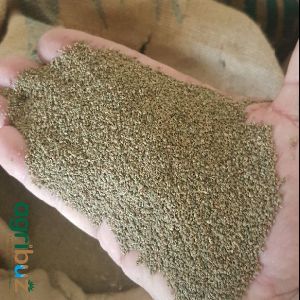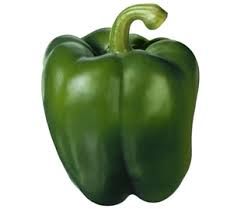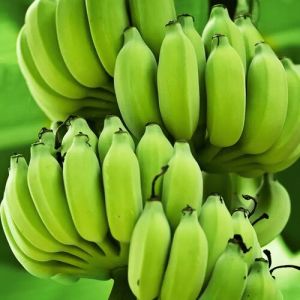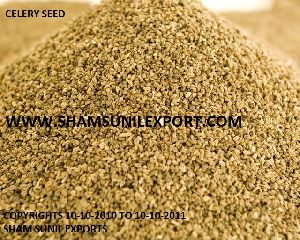
Celery Seeds
90 Per
Premium quality celery seeds double machine clean. Serious buyer feel free contact us. Superior quality available here

Capsicum
Get Price Quote
Capsicums (aka peppers) and the closely related chillis are warm season crops and really need to be left to mid spring before planting in cooler climates. Although they are technically perennial plants (go dormant in winter and regrow the following season) they are generally less productive in successive years and are best replaced each season with fresh seedlings.Small bushy plant about 40cm high The seeds are reluctant to start germinating if temperatures drop at night. These are best sown in small trays in a warm, sheltered place: a small greenhouse if possible. Then plant out when about 10 -12cm (4-5in) tall.They are from the same family as chilli but are not hot and spicy. The seeds are bitter.Capsicums are frost tender and need warmth to ripen the fruit to the brilliant reds and yellows of commercial ones. They can be used green but are not as sweet.Capsicums vary in size and colour with taste varying in sweetness to a slight peppery taste.There are a number of colours available, chocolate, black, yellow, orange as well as red. They all start off green and change as they ripen.Growing InformationSoil:Capsicums and chilli peppers are hungry, gross feeders. They need a nutritious soil that has been well dug through with rich rotted compost. Soil should also drain freely and not hold onto surface moisture for more than about a day after hand watering or a dousing of rain.Time : October to JanuaryIn warmer areas sow indoors or under cover in August and plant out mid to late October as long as it is warm.In cooler spots sow indoors or under cover in August and September and plant out when all risk of frosts has passed.TempratureCapsicums and chilli peppers are intolerant of cold temperatures and cannot handle any frost at all so wait until all risk of frost in your area has passed – this normally means at least after Labour Day – before you plant your seedlings in the garden. In colder parts of the country you may find you have to wait until December or plant in a greenhouse.Sunlight:A site that gets plenty of sun and has shelter from strong winds (which can damage these slightly brittle plants) – perhaps a spot against a warm north-facing fence or wall that can reflect heat of the sun throughout the day. If you are planting in a container then this might give you the flexibility you need in choosing the best location. Plants grow to an average of about knee height.Special NotesCulinary usesPeppers a packed full of vitamins A, C and K which support the immune system and cells. They are full of antioxidants too.Chillies contain capsaicin which could reduce cholesterol and also help reduce the risk of stomach ulcers.Can be sliced and seeded and used raw in salads. Will freeze successfully without blanching if seeded and sliced.Or brush with olive oil, roast at a high temperature until the skin changes colour then put in a covered dish until cool and rub off the skin and remove seeds.
Best Deals from Masala

Mustard Oil Seeds
Get Price Quote
Mustard Oil Seeds (Toria):- This crop is used to extract oil and also used for making sauces which is used in preparation of various foods. This Crop comes in very less quantity and always has a great demand in grain markets.

Black Cumin Seeds
Get Price Quote
5 Ton (MOQ)
Our company is engaged in making available highly aromatic, the finest quality Black Cumin Seeds. Our Cumin Seeds are used for making various medicines that cure the problem of asthma, digestion and so on. Moreover, the Cumin is also extensively used for various culinary purposes. These Cumin Seeds are packed using hygienic packaging material to preserve the aroma and freshness.

Dry Ginger
Get Price Quote

Banana
25 - 50 Per kg
50000 kg (MOQ)
Need a quick, healthy snack? 🍌 Bananas are perfect for on-the-go energy and packed with nutrients! How do you enjoy your bananas—smoothies, pancakes, or just as they are? #BananaBoost #HealthyEating

Fresh Coriander
Get Price Quote
The company is a highly acclaimed Manufacturer and Supplier of Fresh Coriander. The Fresh Coriander is known for its characteristic sweet, aromatic, peppery woody and spicy fragrance. The mild, spicy, warm and slightly burning taste of the Fresh Coriander makes it extremely famous and it is used for providing warm aromatic fragrances to curries, tobacco, canned soups and alcoholic beverages, with the usage including some pharmaceutical products as well.

Celery Seed
Get Price Quote

Coriander Powder
180 Per Kilogram

Turmeric
100 - 200 Per kg
Organic farming

Green Chilly Powder
400 Per Kilogram
1000 Kilogram (MOQ)
We are offering green chilli powder is natural without any colour mixing and its full of vitamin a, c, iron , proteins.

Yellow Mustard Seed
7,000 - 7,600 Per 50 kgs
this product is avlble with us as we are stockist and exporter and oil millers . It is the product of Punjab and Rajasthan . We also crush it .

Celery Seeds
Get Price Quote
Celery Seeds, Poppy Seed, Pulses, Printed Packaging Box, Oil Seeds, Wheat

Spices
Get Price Quote
Spices, Black Pepper, woods berry coffee

Turmeric Powder
Get Price Quote
Handbags, Women Undergarments, Perfumes, Belts

Spices
Get Price Quote
Spices, Tea, Cereals, Cookies, Textiles Fabrics

red chilli puree
Get Price Quote
red chilli puree, Apple Pulp, fruit juice concentrates, Guava Pulp

sugar coated fennel
Get Price Quote
sugar coated fennel, Bhujia Namkeen, Poha, Pasta, pisa Sugar, bura sugar

Green Chilli
Get Price Quote
Green Chilli

Black Pepper
Get Price Quote
Black Pepper, Food Grains, Pulses, Spices